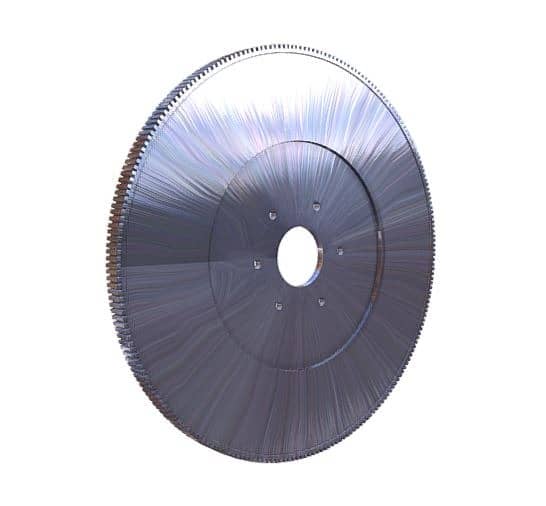What is a flywheel?
A flywheel is a machinery piece located at one end of a crankshaft. Flywheels are mounted on many pieces of rotating machinery although they are often associated with automobiles only. A flywheel serves three functions:
1. Due to its momentum (inertia) and weight, it reduces vibration by smoothing out the power stroke as each cylinder fires.
2. It sometimes serves as the mounting surface used to bolt the engine (four-stroke or two-stroke) to its load.
3. The flywheel has gear teeth around its perimeter that allow the starter motor to engage and crank the engine.

Tip: The flywheel diameter is usually large as this allows it to rotate further from the crankshaft centre axis of rotation (an imaginary line that runs through the middle of the crankshaft). The increased diameter also makes it 'easier' for the starter motor to rotate the engine (this setup is similar to gears on a bike, a low gear requires a larger force to be applied in order for the wheel to rotate whilst a higher gear requires less force but the amount the wheel rotates is less).

Enjoying this article? Then be sure to check out our Internal Combustion Engines Video Course! The course has a quiz, handbook, and you will receive a certificate when you finish the course. Enjoy!
Related Online Engineering Courses
Internal Combustion Engine Basics
Diesel Engine Fundamentals (Part 1)
Diesel Engine Fundamentals (Part 2)
Additional Resources
https://en.wikipedia.org/wiki/Flywheel
https://www.sciencedirect.com/topics/engineering/engine-flywheel
https://courses.washington.edu/engr100/Section_Wei/engine/UofWindsorManual/Flywheel.htm